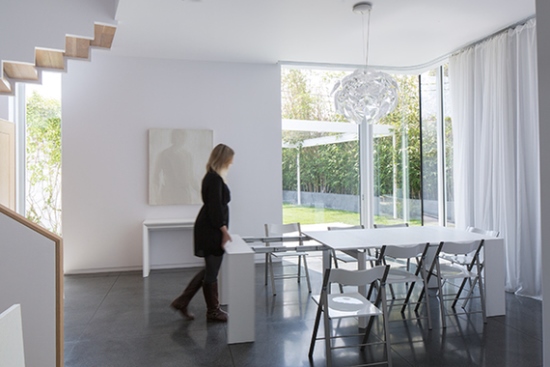The difference between green furniture and sustainable furniture
Source:huffingtonpost.com
Many furniture companies claim their products are “green,” a designation usually referring to material sourcing. Maybe their sofa frames are made out of dumpster-sourced scrap metal or their cushions are filled with used ticker tape.

Many furniture companies claim their products are “green,” a designation usually referring to material sourcing. Maybe their sofa frames are made out of dumpster-sourced scrap metal or their cushions are filled with used ticker tape. Responsible material sourcing is important, but it does not necessarily make something sustainable; that is, able to exist in perpetuity from an environmental and resource consumption standpoint.
To be sustainable, furniture should be high quality and support a lifestyle with reduced energy and resource needs. You can have a piece of furniture made of the most responsibly sourced materials out there, but if it falls apart in a short time and winds up in a landfill, or if it is designed in such a way that it can only fit into a carbon-spewing, resource-gobbling McMansion, it’s not sustainable.
When it comes to sustainability, size does matter. Here’s why:
One of the best ways, if not the best way of reducing our carbon footprints and natural resource consumption is to reduce the physical footprints of our homes.
Smaller homes produce less operational carbon emissions, (e.g., heating and cooling) than larger homes and are less resource intensive to build.
Smaller homes tend to discourage excessive consumerism mitigating that behavior’s attendant environmental impact.
Smaller homes typically support denser, more transit friendly communities, which, by their very nature, allow for a reduction in associated transit emissions.
Location, Location, Location
When thinking about sustainable housing, the name of the game is location, location, location. An EPA study found that an energy efficient single family suburban house plus a fuel efficient car can cut your carbon footprint by 34% as compared to a conventional, single family, suburban house and a car with average fuel economy. While this is a significant improvement over a standard single-family home, the same study found that living in an energy efficient multifamily house (i.e. housing with two or more units such as a townhouse or apartment) with access to public transportation reduces your carbon footprint by 62% - and that still assumes car ownership.
As one would expect, multifamily housing units are typically smaller than single-family houses. The median size of a new multifamily unit is 1,074 square feet, whereas the median size of a new single family home is 2,467 square feet. But with a smaller - albeit more environmentally-friendly - footprint can come some challenges regarding functionality, especially as a household grows or changes over time.
Let’s face it, it’s the desire for - or perceived need for - more space that frequently drives people out of central, transit-friendly locations in search of more square footage. Since housing in most urban cores is considerably more expensive than suburban housing on a per square foot basis, moving to a larger home in a central location can be cost-prohibitive.
This is where Resource Furniture comes in.
Increase Function, Not Footprints
All this is to say that furniture is only as sustainable as its setting. Space-maximizing furniture solutions from Resource Furniture can remove some of the reasons that people move further out in search of more space, by increasing functionality without increasing the physical footprint. Every product from Resource Furniture is not only manufactured using highly sustainable methods and materials, but also provide the same level of comfort and functionality as conventional furniture pieces and they are designed and built to last. Each of nine Resource Furniture showrooms offers a vast selection of multifunctional, space-saving furniture solutions that allow people to live comfortably and luxuriously in a truly sustainable setting.
By multiplying the function of a single space, combining rooms, making existing spaces work more efficiently, and utilizing high-quality multifunctional furniture, less square footage is required. Needing less space, one can live more centrally, drive less, walk more and consume fewer resources. In other words - live a sustainable life, not just a green one.
(Source: huffingtonpost.com Author: Ron Barth)

 沪公网安备31010402003309号
沪公网安备31010402003309号



